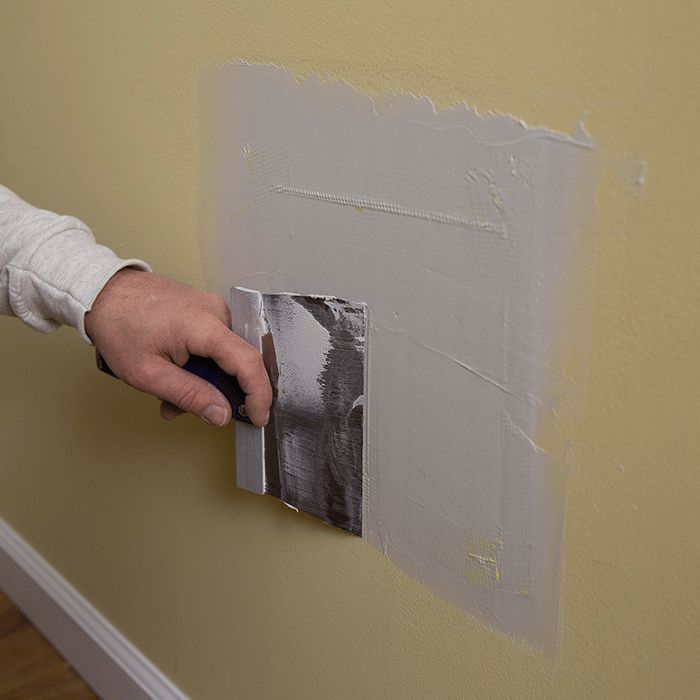Crucial Tips for Effective Drywall Repair Work and Installment Methods
Reliable drywall repair work and setup needs a careful technique. Comprehending the sorts of drywall and having the right tools is important. Proper methods and exact dimensions can significantly affect the result. Many ignore necessary steps like taping and sanding, which can make or damage the last appearance. As projects advance, common difficulties may emerge that require focus. Exploring these suggestions can result in an extra sleek and effective finish.
Comprehending Different Kinds of Drywall
Comprehending the various kinds of drywall is necessary for any kind of successful repair service or setup task. Drywall, generally called gypsum board, comes in numerous ranges customized for details applications. Criterion drywall is the most widely used kind, perfect for basic interior walls and ceilings. Moisture-resistant drywall, frequently green in color, is made for locations prone to moisture, such as kitchens and shower rooms. Fire-resistant drywall, usually tinted pink or purple, is engineered to stand up to higher temperature levels and is usually utilized in garages or near heating systems. Additionally, soundproof drywall assists minimize sound transmission, making it appropriate for multi-family homes or recording workshops. Specialty drywall, like cement board, is made use of in wet locations like showers or bathtub surrounds. Understanding these types helps in selecting the appropriate material for each and every task, guaranteeing toughness and effectiveness in repair services or brand-new setups.
Vital Devices for Drywall Repair and Installation
Having the right tools is crucial for reliable drywall fixing and installment. A high quality utility knife is crucial for reducing drywall sheets exactly. A drywall T-square aids assure straight edges, while a taping knife is needed for applying joint substance efficiently over seams. Furthermore, a drywall saw allows for removing harmed sections or suitable drywall around fixtures.
For hanging drywall, a power drill with drywall screws is vital, as it allows protected and quick installment. A degree is additionally crucial to confirm that the drywall is straight and effectively aligned. Once it has dried out, a sanding block or pole sander is necessary for smoothing out joint compound. Ultimately, a measuring tape is vital for accurate measurements, stopping waste and ensuring a proper fit. Outfitted with these devices, individuals can tackle drywall projects successfully, leading to professional-looking results.
Step-by-Step Overview to Fixing Holes and Cracks
When resolving holes and splits in drywall, having the right tools and products is essential for a successful repair. This guide lays out the required items and gives a clear, step-by-step process to properly restore the surface. Understanding these components will help assure a seamless coating and durable results.
Devices and Materials Needed
A well-appointed toolkit is vital for reliable drywall repair service and installation. Trick tools consist of an utility blade for reducing drywall, a tape measure to ensure precise sizing, and a drywall saw for larger holes. A putty blade is vital for using joint compound smoothly, while a sanding block or post sander helps attain a seamless finish. For patching, a roll of fiberglass fit together tape or paper tape is essential to strengthen joints. In addition, a drill and screws are required for securing brand-new drywall pieces. Vital products include joint substance, guide, and paint to complete the repair service. Having these tools and materials on hand guarantees a smoother, a lot more reliable fixing process, generating professional-looking outcomes.
Repair Work Process Steps
Fixing holes and fractures in drywall calls for an organized approach to ensure a smooth coating. Initially, the area bordering the damage ought to be cleansed extensively to remove dirt and debris. Next off, for little splits, a putty knife is utilized to apply a joint substance uniformly over the location. For bigger openings, a patch is necessary; the damaged section is removed, and a new piece of drywall is fitted in area, protected with screws. When the spot remains in position, joint compound is used to blend the edges. After drying out, fining sand the area smooth is important. Ultimately, the repaired surface ought to be primed and painted to match the bordering wall surface, guaranteeing an unnoticeable fixing.
Techniques for Setting Up Drywall Panels
Mounting drywall panels needs careful preparation and exact implementation to ensure a smooth and expert finish. It is vital to gauge the wall space accurately and cut the panels to fit, making certain that they straighten with the studs. Placing the panels flat is generally recommended, as this can enhance the structural honesty and decrease the variety of joints.
Utilizing drywall screws, installers need to protect the panels every 16 inches along the studs, ensuring a company hold. It is important to prevent overdriving the screws, which can damage the paper surface area. For corners and sides, using an energy blade enables clean cuts and a tight fit.

Completing Touches: Taping, Mudding, and Sanding
When the drywall panels are securely in position, the following vital action includes the complements of taping, mudding, and sanding. Insulation is very important for creating a smooth shift in between panels and concealing joints. A quality drywall tape, either paper or fiberglass fit together, need to be applied over the seams, guaranteeing it sticks appropriately to the mud that will be used next.
Mudding, or using joint substance, adheres to the taping process. This compound fills voids and smooths out the surface. A first coat should be used kindly, feathering the edges to blend with the drywall. After the preliminary coat dries, succeeding layers may be required for a remarkable finish.
Finally, fining sand is required to achieve a smooth surface. A fine-grit sandpaper ought to be used to gently ravel any kind of blemishes. Care should be taken to stay clear of over-sanding, which can harm the drywall - Drywall Installation Ogden Utah. Appropriately carried out, these completing touches develop an expert appearance all set for paint
Tips for Keeping Your Drywall After Setup
Preserving drywall after installation is vital to maintaining its appearance and structural integrity. Regular cleansing is needed; dirt and dirt can collect, so mild cleaning with a moist towel is advised. House owners must likewise inspect for any signs of wetness or mold, specifically in high-humidity areas like bathrooms and kitchen areas. If any damage occurs, it is very important to address it quickly to avoid further concerns.
Utilizing furnishings pads can help protect against scrapes or damages from heavy items. In addition, painting the drywall with a premium, cleanable paint gives an additional layer of defense and makes future cleansing easier. Stay clear of making use of unpleasant cleansers or devices, as these can damage the surface. Maintaining a steady indoor climate with appropriate humidity levels will certainly assist prevent cracking or contorting over time. By complying with these tips, one can guarantee that drywall remains in outstanding problem for many years ahead.
Frequently Asked Inquiries
For How Long Does Drywall Take to Completely Dry After Setup?

Can I Mount Drywall Over Existing Drywall?
Yes, drywall can be installed over existing drywall, yet it is necessary to assure the underlying surface area is safe and secure and effectively prepared. This approach can enhance insulation and lower setup time, though click here it may add weight.
What Is the Finest Way to Soundproof Drywall?
The best way to soundproof drywall includes making use of specialized soundproofing materials, such as resistant networks, acoustic caulk, and sound-dampening drywall. These methods properly lessen audio transmission between areas, boosting overall acoustic performance in living areas.
How Do I Pick the Right Drywall Thickness?
To pick the ideal drywall thickness, take into consideration the application and area. Criterion household walls normally make use of 1/2 inch, while ceilings or specialized locations may call for 5/8 inch for added stamina and soundproofing capacities.
Exist Eco-Friendly Drywall Options Available?
Yes, environmentally friendly drywall options are available. These include items made from recycled materials, plaster boards with reduced volatile natural compounds (VOCs), and those using lasting manufacturing processes, using environmentally-conscious choices for construction and renovation tasks.
Having the right devices is necessary for reliable drywall repair and installation. For hanging drywall, a power drill with drywall screws is vital, as it enables quick and protected installation. Key tools include an utility blade for reducing drywall, a tape procedure to guarantee precise sizing, and a drywall saw for bigger openings. Yes, drywall can be mounted over existing drywall, yet it is crucial to guarantee the underlying surface is safe and secure and effectively prepared. The finest means to soundproof drywall involves using specialized soundproofing products, such as durable channels, acoustic caulk, and sound-dampening drywall.